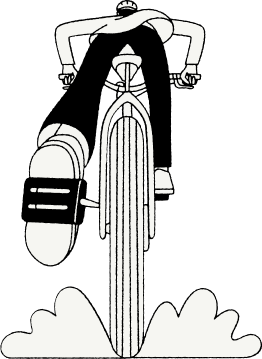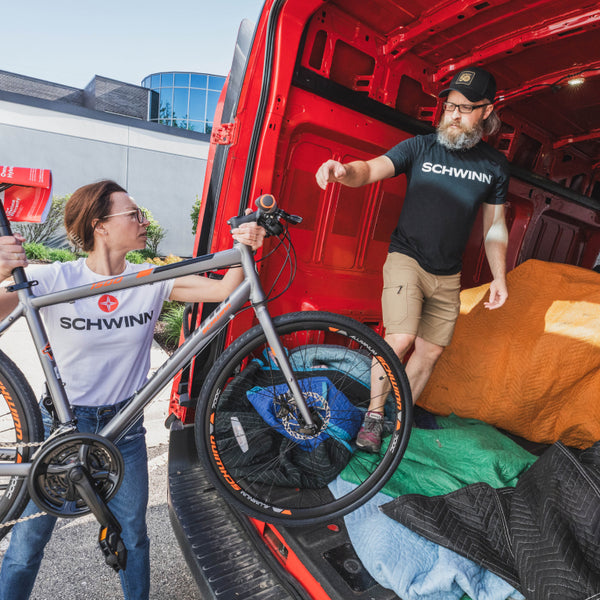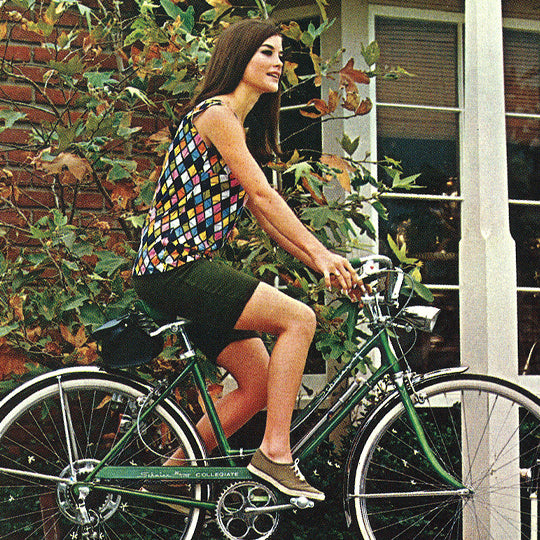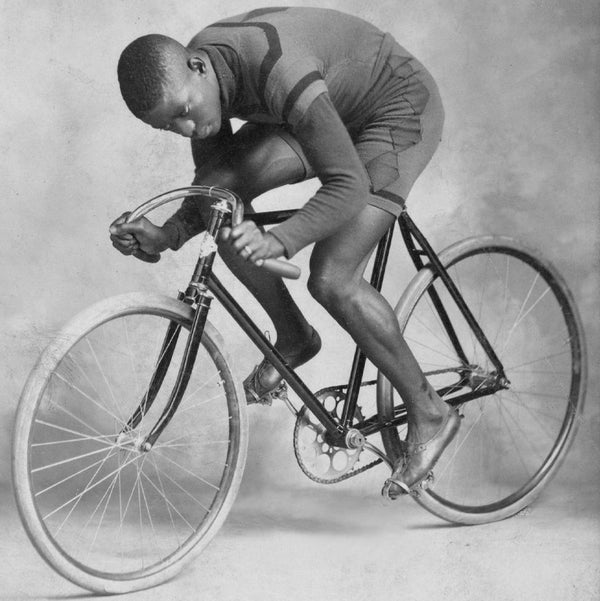A true classic never goes out of style. But how are they born? When it comes to classic Schwinn bicycles, it starts with great design, a double dose of fun, and a little bit of magic. Join us on a ride down memory lane to see just how some of our most famous bikes came to be.

1940’s
The 1940’s were all about innovation for Schwinn. Front-wheel brakes were added – borrowing from the motorcycle industry – providing improved performance, while accessories like headlights served both function and style. The 1946 catalog even featured Hollywood’s elite, like Bob Hope, Humphrey Bogart, and Lauren Bacall, riding cruisers.
In addition to the popular cruisers, Schwinn also developed the Paramount during this period. As a lightweight “high sports” model, the Paramount was designed for racing. It was soon dubbed the “king of the track” for both speed and endurance riding.

1950’s
By the 1950s, one in every four bicycles sold in the U.S. was a Schwinn. Iconic models like the Collegiate, Varsity, and Traveler showcased bike silhouettes that would become ingrained in American minds. In particular, the Varsity offered style and an affordable price that helped make cycling a more universally available pastime. It became the most widely sold derailleur-equipped bike of all time, with nearly 2 million units sold.

1960's
In the 1960s, muscle-car style and bicycle design were combined to create Schwinn’s most celebrated model of all time: the Sting-Ray. It featured high-rise handlebars, a banana seat, a stick shifter, and a racing Slick tire.

The Sting-Ray quickly became the bike to have and came to embody a childhood rite of passage for generations.
But that was just the beginning. Another revolution in cycling was on the horizon.

1970's
The success of the Sting-Ray was continued by the Krate models in the early 1970s. The Krates had the same muscle-car look as their predecessor and came with names like Apple Krate, Orange Krate, and Lemon Peeler. New colors (like the Coal Krate) and accessories were released every year, and only added to the bikes’ popularity.
Meanwhile, something new was happening in Southern California. People began to hold motocross-style races and perform stunts with bicycles, most notably the Sting-Ray and Krate models. Thus, BMX was born. And thanks to a scene in the documentary On Any Sunday (1971), its popularity soon spread across the country.

The BMX craze was at full tilt by the late 1970’s. Extreme sports were becoming popular, and there was a seemingly endless appetite for all things rad. Meeting the aesthetic of the era, Schwinn released the Predator – a gleaming chrome BMX-style bike with an aggressive style. It soon became wildly popular among kids and enjoys a cult status to this day.

1980's
Starting in the 1980s, the cycling world saw the rise of mountain biking. Though this style of cycling had existed for some time, it had only just become mainstream. In a secret effort known as “Project Underground,” Schwinn developed their own hightech, lightweight line of mountain bikes: The Homegrown Series. Made in the U.S., the Homegrown Series featured a radically new suspension system with an isolated drivetrain.
And that’s only a taste of some of the fantastic bikes we’ve built over the years.

Apple Krate 20in

Lemon Peeler Krate 20in

Grey Ghost Krate 20in
If you’d like to ride one of our classic designs yourself, you’re in luck! We’re re-releasing some of some of our classic bikes, including the Apple Krate, Lemon Peeler, and Grey Ghost. Check out our classics collection page to learn more. Or, for the full tour of our brand story, check out our history page.
Thanks for joining us on our trip down memory lane, and we can’t wait to show you what great things we have coming up next. See you out there!












